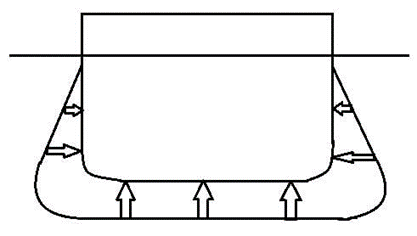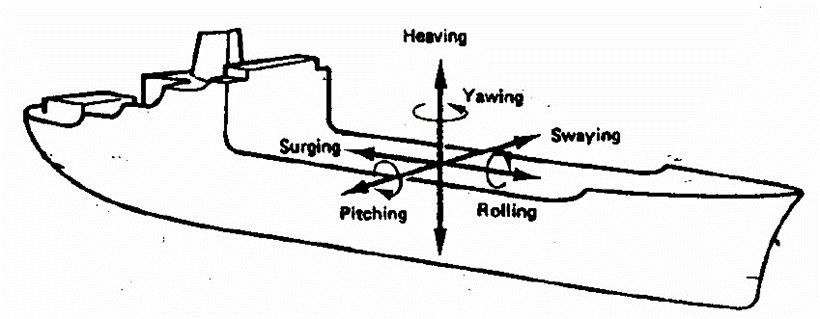Stresses in Ships
Stresses in Ships
.stresses in ship .stress on ship .stress in ship .stresses on ship
A ship at sea is subjected to a number of forces causing the structure to distort. Initially, these may be divided into two categories, as follows:
Static forces –
Ship floating at rest in still water.
Two major forces acting:
- the weight of the ship acting vertically down
- buoyancy acting up
Dynamic forces –
due to the motion of the ship and the sea the structural stresses, caused by the above forces, to which the ship structure is subjected may be categorized as:
- Longitudinal stresses (hogging and sagging)
- Transverse stresses (racking and the effects of water pressure)
- Local dynamic stresses (panting and pounding)
Longitudinal Stress
- The forces are two in number, the weight of the ship and all that it carries acting downwards and the vertical component of the hydrostatic pressure.
- Depending upon the direction in which the bending moment acts the ship will Hog or Sag.
Hogging
- If the buoyancy amidships exceed the weight due to loading or when the wave crest is amidships, the ship will Hog, as a beam supported at mid length and loaded at the end.

Sagging
- If the weight amidships exceed the buoyancy or when the wave trough amidships the ship will sag, as a beam supported at a ends and loaded at mid length.

TRANSVERSE STRESSES
Racking
When a ship is rolling in a seaway or is struck by beam waves, the ship’s structure is liable to distort in a transverse direction as shown.

Water Pressure
Water pressure acts perpendicular to the shell of the ship, increasing with depth. The effect is to push the ship’s sides in and the bottom up. It is resisted by frames, bulkheads, floor and girders.

LOCAL DYNAMIC STRESSES

The dynamic effects arise from the motion of the ship itself. A ship among waves as three linear motions.
- Surging: The forward and aft linear motion (along x) of a ship is called surging.
- Heaving: The vertical up and down linear motion (along y) of a ship is called heaving.
- Swaying: The side to side linear motion (along z) of a ship is called swaying.
- Rolling: The rotational motion of a ship about longitudinal axis is called rolling.
- Yawing: The rotational motion of a ship about vertical axis is called yawing.
- Pitching: The rotational motion of a ship about transverse axis is called pitching.
When the ship motions are large particularly in pitching and heaving, considerable dynamic forces can be created in the structure.
Panting
.panting
As wave passes along the ship, they cause fluctuation in water pressure which tends to create in and out movement of the shell plating This in and out movement is called panting.
This is particularly the case at the fore end. The rules of the classification societies required extra stiffening, at the end of the ship, in the form of beams, brackets, stringer plate, etc. in order to reduce the possibility of damage.
Slamming or Pounding
.pounding
In heavy weather when the ship is heaving and pitching the bows often lift clear of the water and then slam down heavily onto the sea, which is called pounding.
Extra stiffening require at the fore end to reduce the possibility of damage.
Share this article
Leave a Comment
Comments (0)
No comments yet. Be the first to share your thoughts!